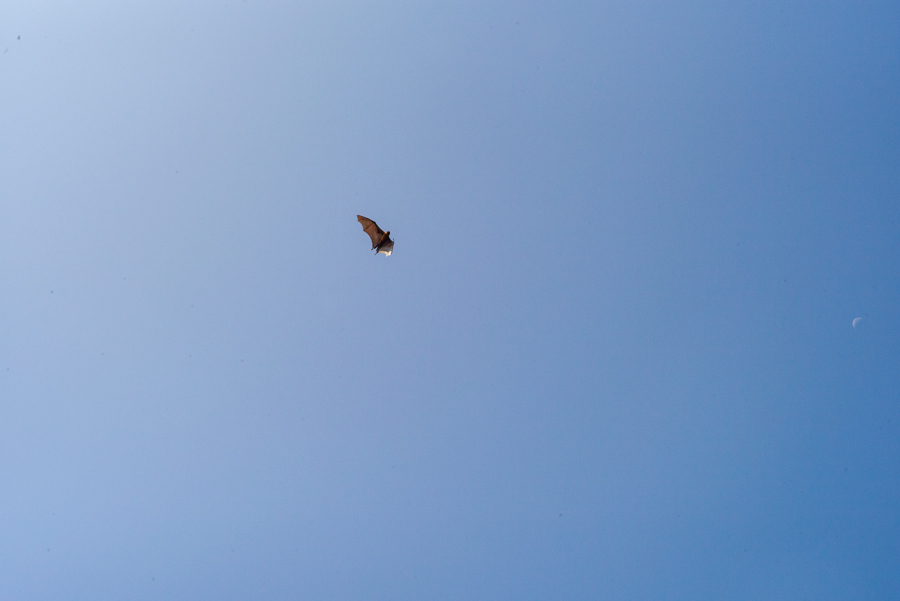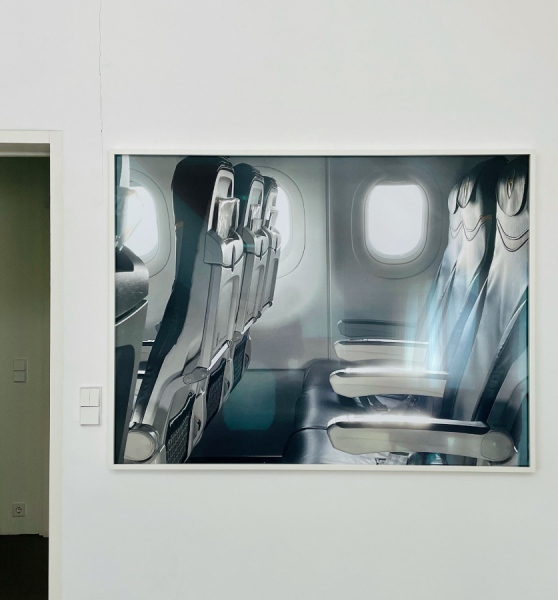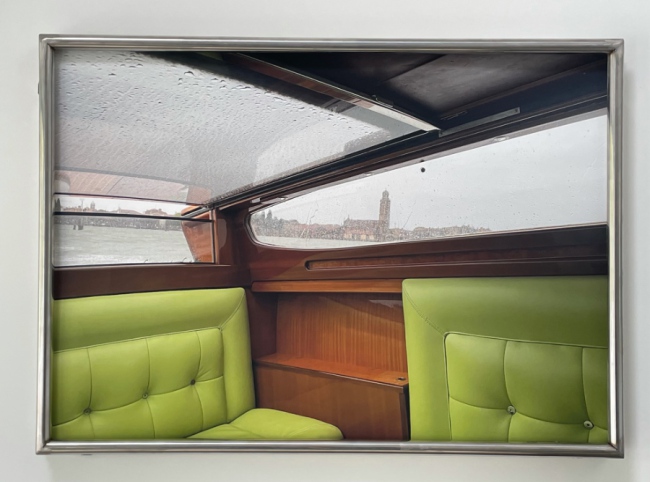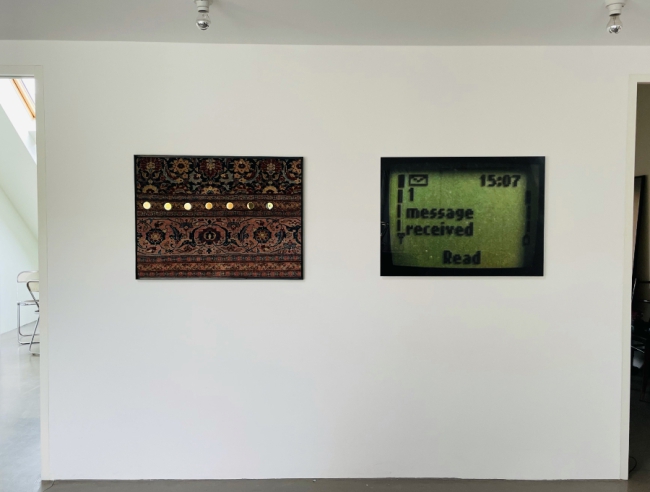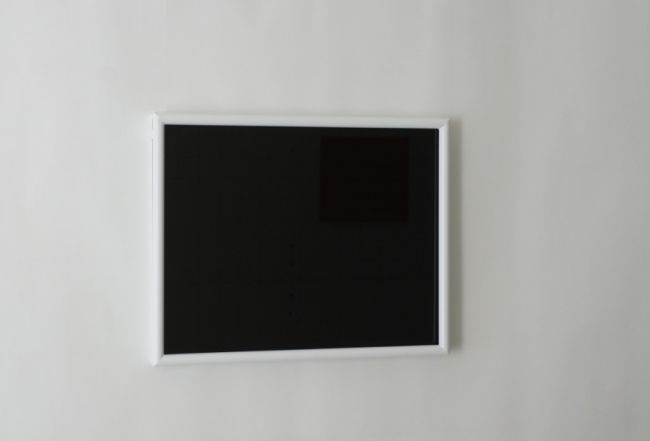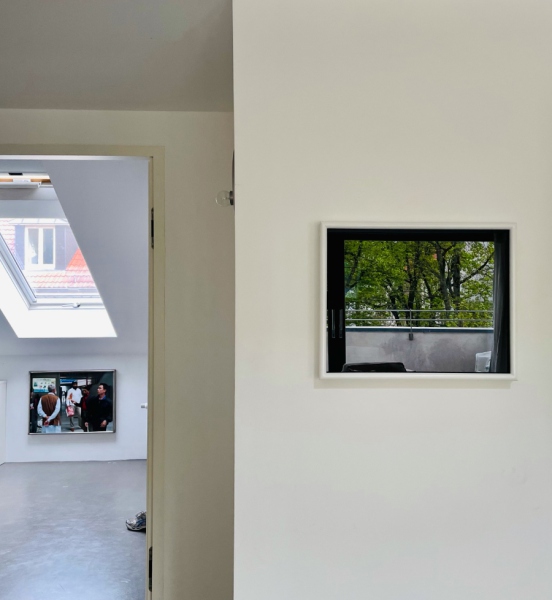Valerie Stahl von Stromberg – Pteropus giganteus
Valerie Stahl von Stromberg - Pteropus giganteus - April 30 May 1, 2022, 10 a.m.- 8 p.m.
Linienstr. 163 10115 Berlin
Curated by Johanna Hardenberg
Die Ausstellung „Pteropus giganteus“ von Valerie Stahl von Stromberg enthält hauptsächlich neue Fotografien, die Teile von fortlaufenden Serien sind. So gibt es seit 2009 die National Geographic Art Serie mit Bezügen zur Tier-, Reise- oder Wissenschaftsfotografie. „National Geographic Photography Art (Pteropus giganteus I)“ zeigt den größten Riesenflughund der Erde, er lebt in Sri Lanka und hat eine Flügelspannweite von 112 cm, um 6:30 morgens auf Himmelsflur, genauer vor Dämmerungslicht.
In der Ausstellung finden sich weitere Flächen: Fensterflächen, Sitzflächen, ornamentale Flächen, Screen. Ihnen ist gemein, dass sie in Ausschnitten gefasst sind und damit auf formaler Ebene auf eine Bedingung von Fotografie verweisen. Überdies lassen sie sich als Abstraktionen betrachten, die der Malerei und ihren Mitteln nahe stehen, auf einem Verständnis von Assimilation und Synthese gründen und dem Ziel, etwas zum Vorschein zu bringen. In „Transformation Plate (V)“ formiert das geschnittene Stück eines Täbriz Teppichs, den der Vater der Künstlerin 1945 auf der Flucht aus dem Osten Deutschlands gerollt mit nach Köln gebracht hat. Die fertiggestellte Serie wird alle Teppichteile umfassen. In dem Werk geht es nicht nur um die Mitnahme, oder eine Narration über das Festhalten an Dingen, sondern seine Wirkung verdankt es der prototypen Veredelung und seltsamen Verräumlichung, die sich durch Fixierung und Besatz mit vergoldeten Knöpfen sowie einer iPhone Kamera ergeben.
Vor allem in der Fotografie „Non-Algo series 103 (Yiwu Market, China)“ ist die Darstellung eines Moments erkennbar, der im Gegensatz zu einem Begriff für jede Person eine eigene Bedeutung hat. Damit kann er zwar von Algorithmen aufgegriffen werden, aber das Ergebnis bleibt disfunktional. (Gegenstück dazu, fast wie ein KI Witz, wäre möglicherweise der Koffer „Dans tes bras“.) Non-Algo teilt die fotografische Herkunft der Künstlerin mit, welche sich auf Henri Cartier-Bresson und dessen „Fotografie des entscheidenden Moments“ bezieht. In vielen der Werke beinhaltet sie aber über die Beziehung zu den Menschen hinaus die menschliche Betrachtung als eine Übereinkunft, die dem Zusammentreffen mit dem Bild erwächst. Die Annahme, dass jedes Foto Gedanken nahe legt, die nicht aus ihm heraus gelöst werden -- Ich betrachte das Bild eines leeren Flugzeugs und fliege alleine in den Himmel.
The exhibition "Pteropus giganteus" by Valerie Stahl von Stromberg comprises mainly new photographs that are part of an ongoing series. Since 2009 there has been the National Geographic Art series with references to animal, travel or scientific photography. „National Geographic Photography Art (Pteropus giganteus I)“ shows the largest flying fox on earth, it lives in Sri Lanka and has a wingspan of 112 cm, at 6:30 a.m., set against the canopy of the sky, or, more precisely, against the light of dawn.
There are other surfaces in the exhibition: window planes, seating surfaces, ornamental spaces, a screen, glass. What they have in common is that they are cut out fragements and thus, on a formal level, refer to a condition of photography. Moreover, they can be viewed as abstractions, close to painting and its pictorial means, based on an understanding of assimilation, synthesis and the aim to reveal something. „Transformation Plate (V)“ deploys the cut piece of a Tabriz carpet that the artist's father brought as a roll to Cologne in 1945 when fleeing East Germany. The finished series will include all carpet parts. The work is not just a narration about taking or holding on to things, but it owes its effect to the prototype processing and odd spatialization that result from its fixation and edging with gilded buttons and an iPhone camera.
In the photograph „Non-Algo series 103 (Yiwu Market, China)“ in particular, the depiction of a moment is apparent. The moment, in contrast to a term, has its own meaning for each person. It can be picked up by algorithms, but the result remains dysfunctional. (Its counterpart, almost as if teasing AI, might be the suitcase "Dans tes bras".) Non-Algo discloses the artist's photographic origins that refer to Henri Cartier-Bresson and his “photography of the decisive moment“. In many of the works though, the image doesn’t just contain the relationship with people, it relies on the human gaze as an agreement that arises out of the encounter with it. The assumption that every photography suggests a thought that is inseparable from it -- I look at the picture of an empty airplane and fly alone into the sky.

